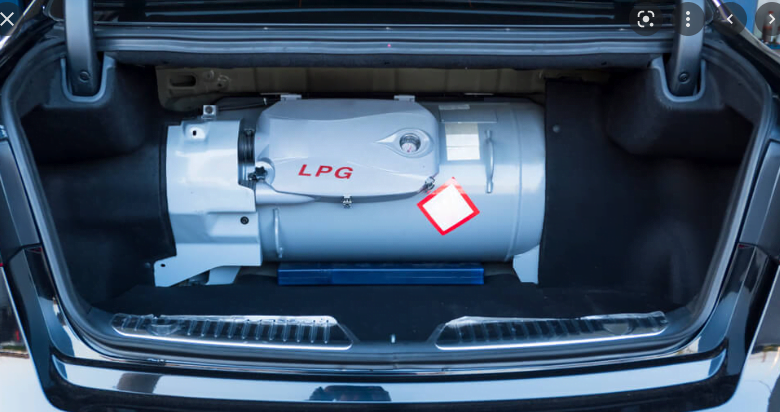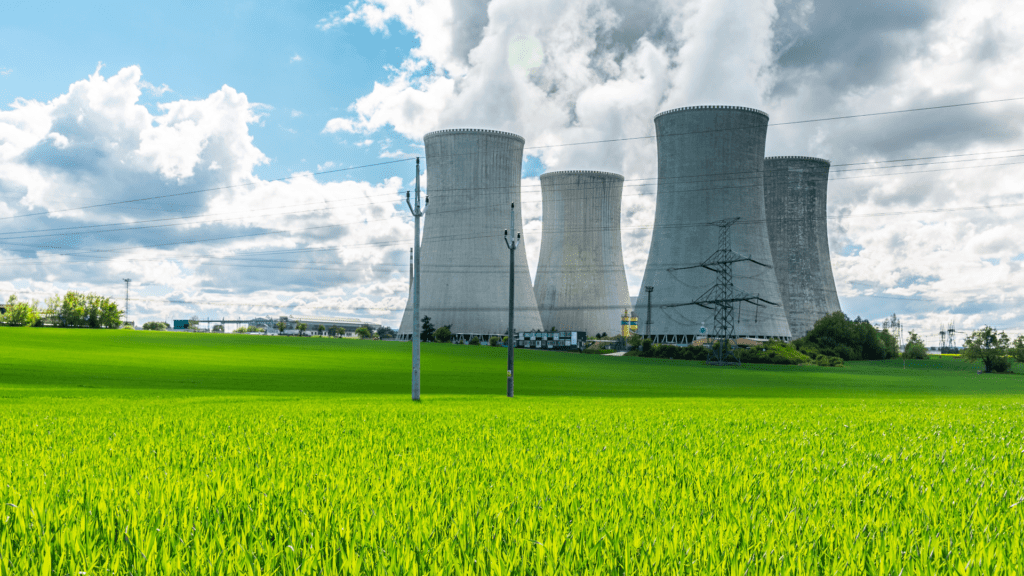Stop Burying Loads Of Rubbish & Use It Instead.
Humans are messy creatures on their best day, every year we generate a bit over 2 billion tonnes of municipal solid waste (MSW), which is more commonly known as our general trash or garbage.
Without getting into too much detail about the many forms of MSW, it’s typically the stuff we put into the general waste bins every week, gets collected by the council trucks and then is no longer our problem (in our minds).
One quick fun fact about our weekly general waste in Australia is that we dispose of 15.5 million disposable nappies every week via our general waste bins.
Now, let’s look at this figure of 2 billion tonnes, what does that look like?
We’ll use the Empire State Building as an example, it weighs 331,122 tonnes. You would need 6,040 empire state buildings to accumulate 2 billion tonnes
It’s important to note that this 2 billion tonnes is the output of approximately 7.674 billion humans.
Our ever increasing population is not helping
What’s really cool about us humans is how much we enjoy having lots of babies every year; in fact, our population grows at a rate of 1.1 percent per year, which means our population will be around 10.19 billion in 2048. If the amount of waste we produce each year continues at the same rate as population growth, we will be producing 2.65 billion tonnes/8,003 Empire State Buildings of garbage.
We can do a lot better with our recycling.
We’re a little naughty with what we put into our general waste bins; we should be a lot better with separating our recycling materials from the general waste.
We really should make the effort as the world is getting a lot better at dealing with recyclables. In Australia as much as 90% of kerbside recycling is now actually recycled.
The remaining 10% that goes to landfill is primarily a result of people putting non-recyclable materials into the recycle bins.
I’m not sure why people would ever green waste like grass clippings into general waste bins when most councils provide green waste bins for us to put out for collection every 2 weeks.
FYI, There is such a thing as composting.
Processing your recyclables is difficult & expensive but necessary.
Almost all plastic can be recycled in general. However, there are a few issues with the process. Unfortunately, due to environmental, economic, or technological constraints, this is not always possible.
Many items contain multiple types of plastic and different layers that are difficult to separate, making recycling time-consuming and costly. Furthermore, food and other contaminants frequently contaminate plastics, rendering them unfit for reuse.
Furthermore, recycling facilities are costly to construct, maintain and operate and can only be profitable if a large amount of plastic is processed every day. Due to low efficiencies and high costs, small quantities of plastics can make recycling uneconomical and inefficient.
Yes, recycling is more than just recovering recyclable materials; it encompasses an entire economic system. Few people are aware that their council’s kerbside recycling program is only the first chunk of a recycling pie and there are a lot of fingers in that pie.
Recyclable materials now end up costing far more to collect and process than they are worth as a product that can be returned to industry.
Unless recycling companies can get some assistance from governments in the form of tax breaks and incentive programs as well as us consumers making sure we only buy recycled products, the markets for recyclable waste that people put out onto the kerbside for collection will struggle.
Sweden knows what to do with their Rubbish.
Sweden is one of the world leaders in terms of environmental consciousness and trash management. The nation recycles almost all of its garbage, producing heat and power in the process.
Australia is in the Dark Ages when it comes to Rubbish Management.
The term “dark ages” refers to the purported lack of culture and civilization in Western Europe during the medieval period; it has a negative connotation and I believe it is completely appropriate when you realize just how many open-air landfills still exist around the world right now. Especially alarming for countries that like other countries to think to think of them as being progressive and ‘in tune’ with the latest environmental concerns etc.
There’s simply no good reason to have them, especially when there are so many fantastic waste to energy, waste re-purposing, and recycling technologies available today that surely render these disgusting, smelly, environmentally damaging and hazardous open-air landfills obsolete.
Sadly, even tough Australia is home to many smart people but it’s also covered in Open Air Landfills.
Australia is home to some of the most intelligent people on the planet. Aussies have invented some of the most amazing things this world has ever seen, such as the black box flight recorder, spray on skin, electronic pacemaker, penicillin medical application, polymer bank notes, Cochlear implant (bionic ear), electric drill, winged keel, Permaculture, WiFi, Ultrasound Scanner, plastic spectacle lenses, and inflatable escape slide and raft (just to name a few).
When Australians are not kicking back with a beer, we apply ourselves like no others. For example, Australian rice growers produce more rice per hectare than anywhere else in the world; we average 10 tonnes per hectare, which is more than double the global average of 4.3 tonnes per hectare.
It doesn’t seem to matter what Australians do or why we do it; we seem to have an incredible ability to be really good at almost everything that is of course except beating New Zealand at Rugby in New Zealand.
So why in this amazing country full of very smart, hard working and beer swilling people are we so incredibly stupid when it comes to landfills?
There is no reason for Australia to bury plastic in the ground, especially when two of our own brilliant scientists, Dr Len Humphreys and Professor Thomas Maschmeyer, have already developed Cat-HTR, a technology that chemically transforms a wide range of low value and waste feedstocks into high value products.
By producing oil from ‘End-of-Life Plastic,’ they have developed a solution that will lessen the world’s reliance on fossil fuels, and we can now divert all plastic from landfills and oceans.
The resulting oil can be refined in a traditional refinery to produce fuels, waxes, and chemicals, including those required to make new plastic.
Licella is an Australian company and is the global leader in hydrothermal liquefaction; their next-generation and patented Catalytic Hydrothermal Reactor (Cat-HTR) technology has the highest oil yield of any ‘plastic to oil technology’ and is the world’s only platform of its kind.
I’m definitely biased towards this company and the Aussie inventors of this technology, but it’s taken a long time for them to get to where they are now, and I’m just thrilled for them.
By breaking the polymeric bonds of the plastic, Cat-HTR uses pressure and water at near or supercritical temperatures to chemically transform it back to the oil from which it originated.
It liberates the hydrogen atoms and breaks down the plastic into its constituent parts. As a result, a variety of materials such as waxes, oils and plastics are produced, which can then be converted into other plastic products or fuels.
Unlike other technologies, Cat-HTR chemically recycles mixed plastics without the need to separate different plastic types.
The Cat-HTR process begins with preparing the feed, which is made up of mixed end-of-life and other previously non-recyclable plastic; it is then melted and pressurised, mixed with very high temperature water and more pressure is added.
It then spends around 20 minutes in the reactors before being de-pressurised; approximately 15% of the output is gas, which is then used to power the process; and the remaining 85 percent of the output is plasticrude, which can be sold to the plastic manufacturers.
Cat-HTR now provides the world with a chemical recycling process that produces a direct substitute for fossil oil, giving the world’s plastic manufacturing companies with another source of feedstock other than crude oil and natural gas.
The thing that really excites me about this technology is that it not only diverts plastic that cannot be cost effectively ‘mechanically recycled’ from landfill or incineration, but it may also make digging up plastics from old landfills the new mining boom around the world.
Mura is a company that is trying to heal the planet
Mura is a company that is going to take chemical recycling of plastic all over the world (their major shareholder is Licella) and the company plans to have 1,000,000 tonnes of annual recycling capacity in operation or development by 2025, with KBR assisting with this global deployment through investment and licensing agreements.
This incredible truly circular economy, in which plastics are reused, remade, and recycled, has the potential to reduce CO2 emissions by up to 40% globally, so the future is looking bright in this one area of the world’s garbage problems.
Sierra Energy and Their FastOx Gasification Technology.
Sierra Energy is trying their best to help fix some of the rubbish problems on this planet via their FastOx Gasification.
It helps when the CEO of your company is Mike Hart.
The CEO and founder of Sierra Energy, Mike Hart, seems to be very committed to eliminating landfills across the globe and hastening the healing of this world.
He impressed everyone by running his entire railway on bio-diesel, for which he was named a “Environmental Hero” by the US Environmental Protection Agency and a “Champion of Change” by the White House.
When it comes to Sierra Energy’s FasOx Gasification Technology, I think he may have just woke up one morning and thought to himself, “I’ve had enough of the troubles landfills are causing this world, I think I’ll fix it!”
So, just like any other normal person would do, he has a shower, gets changed, eats breakfast, establishes a new energy company and fixes up the gasification process so that it is now extremely effective and efficient (Sierra Energy’s Fastox Gasification Process).
This technology is incredible, Mike and his Sierra Energy team now provide the world with a way to quickly process all trash in one motion, with no sorting required; simply ‘chuck it all in,’ and the FastOx Gasification process outputs Synthetic Gas, Liquid Stone, and Liquid Metal, which can then be used to produce a plethora of extremely valuable end products.
This technology’s most needed product by the globe is Synthetic Gas (Syngas), which is a fuel gas mixture mostly made of hydrogen, carbon monoxide, and, in some situations, carbon dioxide.
The name comes from its use as a middleman in the manufacturing of synthetic natural gas (SNG) and ammonia or methanol.
Yep, all of the above is just a perfectly natural thing for a railway boss to do.
The Fastox Gasification process should be in place at every town on this planet.
‘FastOx Gasification’ uses heat, steam and oxygen to break down waste at the molecular level and organic materials turn into an energy-dense syngas that could be used to produce clean energy.
Inorganics melt into a non-leaching stone and metals.
Not That Any Of This Matter To Australia Though.
No matter how good the rubbish management ideas might be, you cannot tell Australia what to do.
Australia is going through an awkward stage of our development, we like to run and play with the big kids on a nice sunny day but we don’t like it when the big kids boss us around.
We’re at that difficult phase where our face is full of pimples; we get very moody and better not dare try and tell us what to do as you’ll never hear the end of it.
The syngas fastox gasification produces could potentially replace the need for methane gas extraction. Imagine if all 537 council areas of Australia had FastOx Gasification for dealing with the general waste. The amount of Syngas that would be produced could solve our Gas Issues forever.
Syngas from your rubbish could be powering gas fired power plants
Not only do we need FastOx Gasification to help us process our existing rubbish but we’ve got many years of buried rubbish that can be mined and then fed into this process 24/7, keeping the lights on a night.
The Syngas can be used to fuel gas fired power station engines all around the country.
So, why do we spend so much money on ‘Waste to Energy’ plants?
Energy from Waste or Waste to Energy (WTE) is the process of producing heat and electricity from waste as a fuel source.
This is frequently accomplished through direct burning in high-temperature trash incinerators, or by producing methane through gasification or anaerobic digestion.
WTE incineration plants are becoming increasingly popular around the world, including in Australia, as a means of decarbonizing both the energy and waste management industries.
The most frequent type of waste-to-energy facility is incineration, which is a pretty basic energy producing process.
Waste is burned to heat water, which converts to steam and spins turbines, which generate power. The residual ash is collected and transported to a landfill, where high-efficiency bag-house filtering devices remove the majority of the particulates but not all of them.
The pollution and particles they produce, the destruction of valuable recyclable materials, and the potential to inhibit more sustainable waste management and renewable energy sources are some of the drawbacks of this technology.
WTE is frequently touted as a carbon-free option to land-filling garbage, yet it is far from being such. Unfortunately, CO2 emissions rise along with the amount of garbage burned in WTE facilities, and the amount of CO2 released per tonne of waste burned depends on the composition of the waste.
The incineration WTE process appears to produce the highest levels of CO2 from municipal solid waste (MSW) which is the most common type of waste they are going to process but it’s better than MSW going to landfill.
I understand why WTE plants have been and are being built in Australia at the moment because we are struggling with power generation. However, no one will ever persuade me that this technology is somehow superior to embracing both Licella’s Cat-HTR and Sierra Energy’s FastOx Gasification solutions, or Nuclear Power for that matter.
The Kwinana Waste to Energy facility is marketed as an important renewable energy venture for both Western Australia and Australia.
It will be the nation’s first thermal utility-scale ‘Waste to Energy’ facility, diverting around 25% of Perth’s post-recycling waste from landfill sites and producing approximately 36 MW of baseload power for grid export.
Folks, I’m Sorry but 36MW isn’t all that spectacular. Why not just buy a 40MW GE Gas Turbine and fuel it with natural, bio or synthetic gas, which you can get 2nd hand online if money is an issue.
Another alternative for this tiny amount of power could be 2 x 20MW Wartsila Gas Engines.
Why not just avoid making rubbish instead?
Oh, sorry everyone is that too obvious?
Footprint is a materials science firm that was founded with the objective of improving the environment.
They are designing and manufacturing plastic replacements for short-term use.
They are supplying this planet with practical solutions to help retailers and food manufacturers migrate to plant-based products in order to reduce CO2 emissions, landfill waste, and reach sustainability goals.
I believe that this is one of the most amazing companies in existence and I genuinely wish that the entire world supports them.
Change The Way We Act And Avoid Rubbish.
The other thing we can do is to simply make a few small changes in your daily routine to reduce the rubbish you create
Always bring your own reusable bags and containers and only use your own reusable water bottles, coffee mugs, and plates.
Avoid individually wrapped items, especially food in snack packs or single-serving containers; start composting in the kitchen and yard right away and please recycle more and better.











